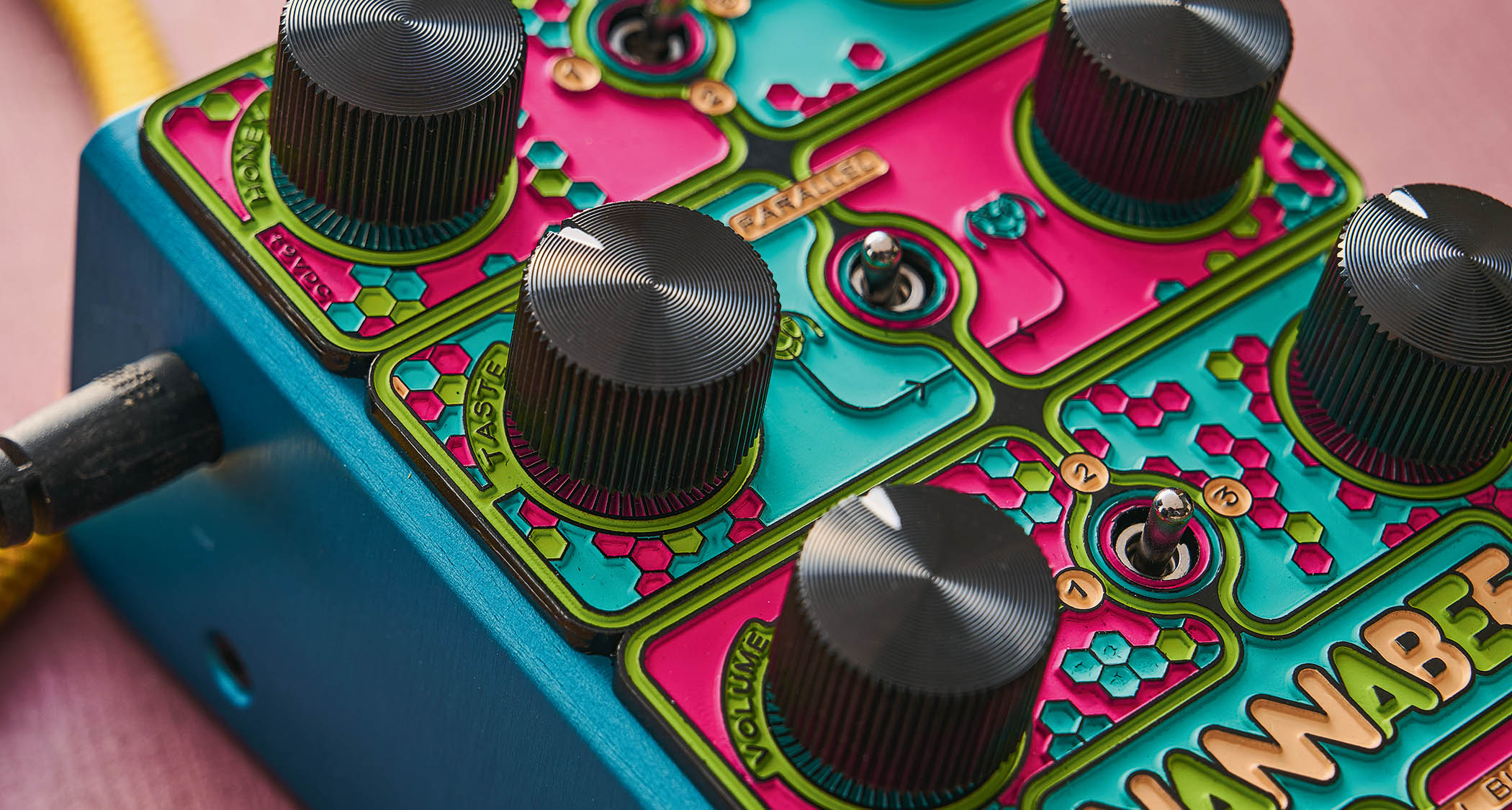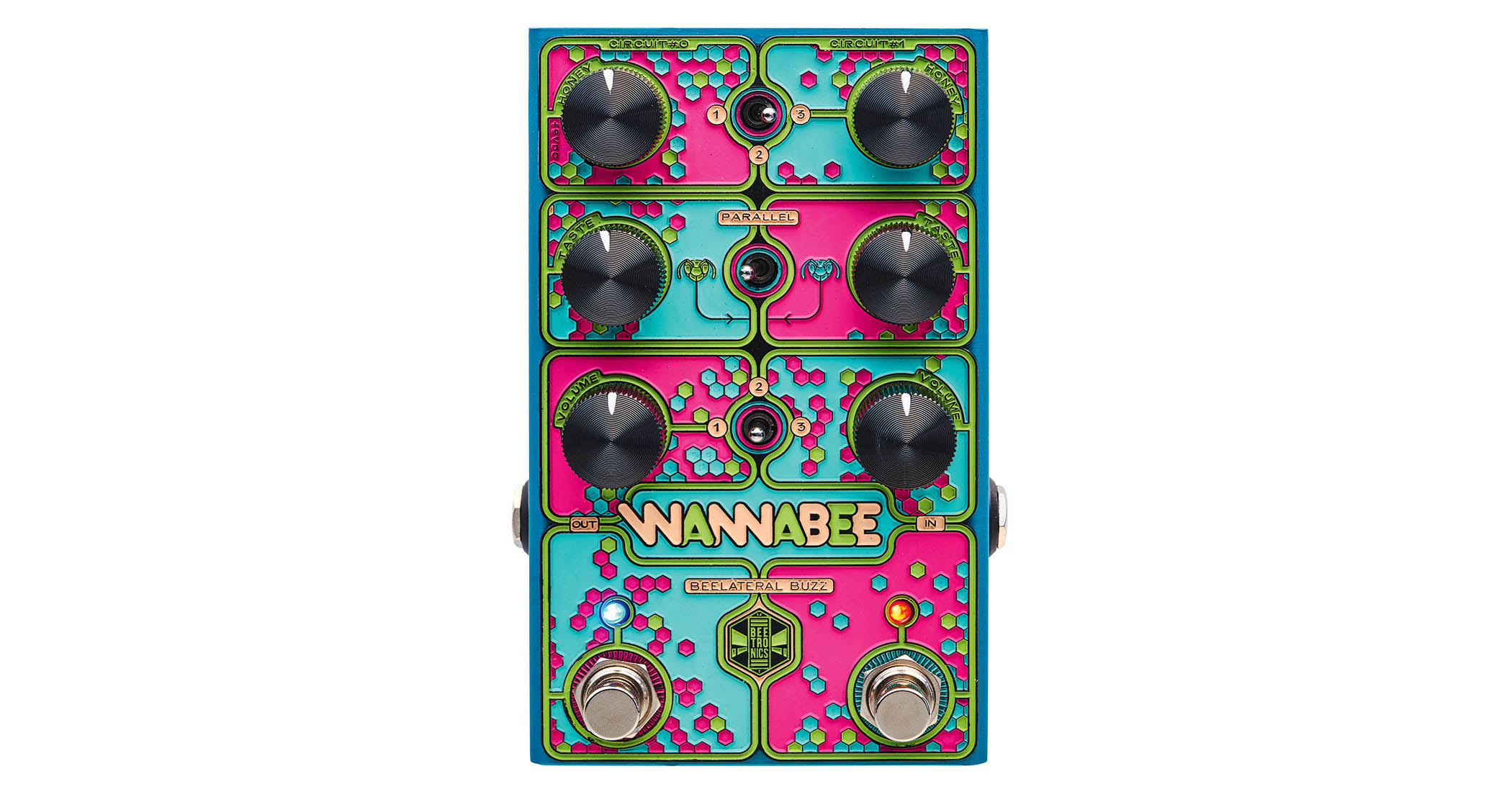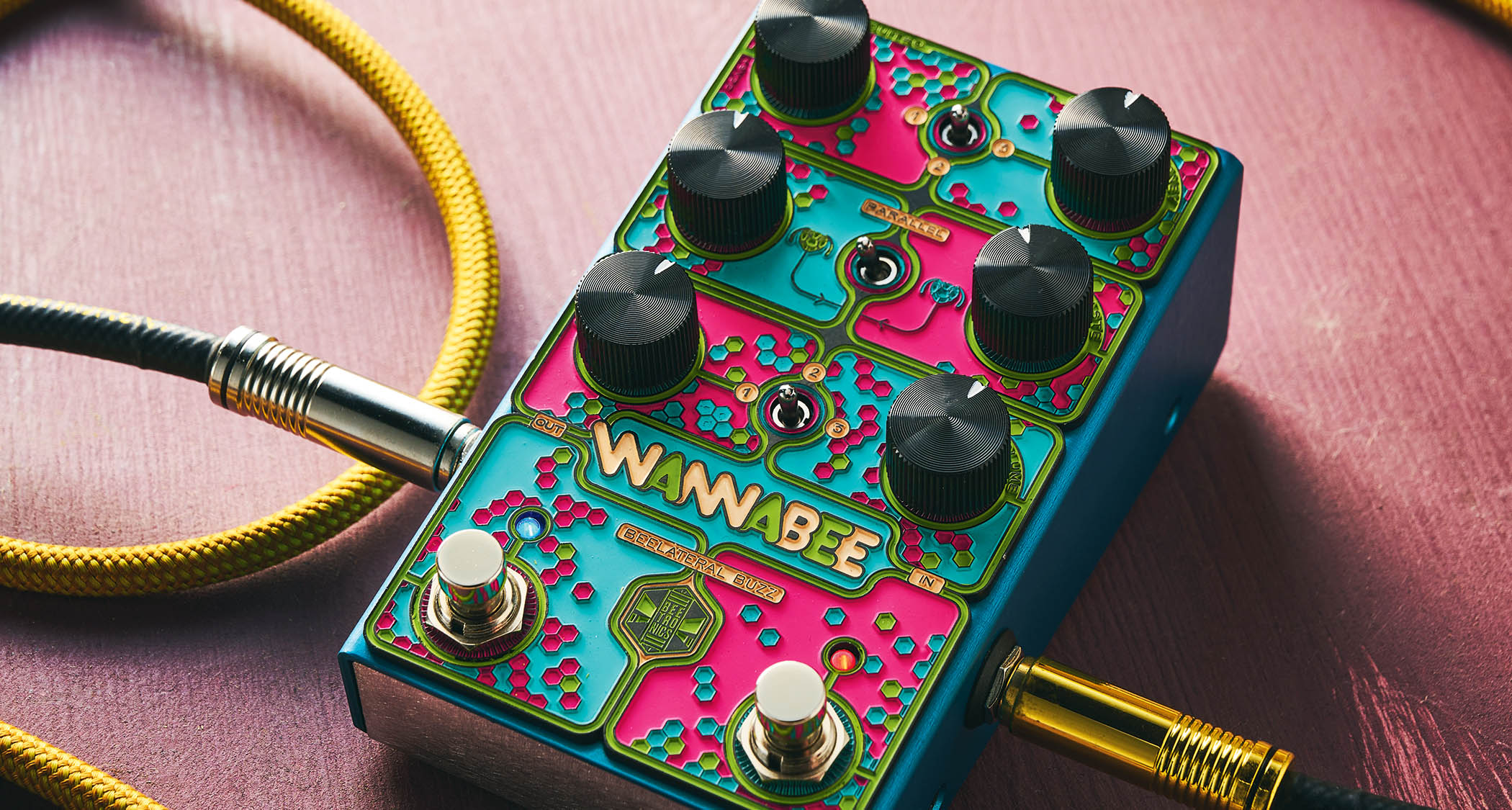Guitar World Verdict
Beetronics has taken what are undoubtedly two of the most favored drive flavors out there, tweaked and combined them into something greater than the sum of their parts, creating a stalwart pedal with a ton of functionality.
Pros
- +
Two classic drive circuits in one pedal.
- +
Useful range of switchable tonal options.
- +
Flexible routing, including a Parallel mode.
- +
Fancy graphics.
Cons
- -
Side-mounted jacks won’t be everybody’s preference.
You can trust Guitar World
We have become so used to seeing Beetronics come up with a series of original fuzz pedals that its latest stompbox is something of a surprise: the aptly named Wannabee is a double-drive pedal with drive circuits that, while no doubt having Beetronics’ own slant on things, are based on the familiar and perennially popular Klon Centaur and Marshall Bluesbreaker pedals.
The Bluesbreaker inspiration is to the left and is called circuit #0, while the Klon-style is to the right and is called circuit #1. Both sides of the pedal are independently footswitchable so can be used individually or combined: a three-way toggle switch determines which will come first in a serial order or, alternatively, the two being used together in parallel, opening up a whole new scenario of sonic blends.
Each side has the same knob functions, namely gain (Honey), tone (Taste) and Volume, but there is another pair of three-way toggle switches – one to tweak each circuit.

The Bluesbreaker has a choice of selectable boosts besides its flat sound: one in the low-end offering full-fat warmth, the other in the midrange delivering cut-through presence.
For the Klon there are three distinct options, including the choice of mixing in two different amounts of clean sound (the original Klon featured a degree of clean sound in the mix).
Both drives definitely reside in the ballpark of what you’d expect from the pedals they’re based on, and either can be called upon to be used individually, both being capable of running from mild boost and enhancement through to fully driven sounds with practical top-end adjustment via the Taste knobs.
Beyond individual use, things get really interesting with both pedals interacting. Combining them in serial order you can push things into some particularly choice, throaty distortion. But perhaps the pedal’s most intriguing attraction is the parallel mode.
This not only opens up a whole new range of edgy dual textures to be explored but also offers a completely natural way to stack drives, perhaps running the Klon as an always-on tone conditioner and bringing the Bluesbreaker in for some occasional extra whomp.
Specs

- PRICE: $299 / £315
- ORIGIN: USA
- TYPE: Dual-drive pedal
- FEATURES: True bypass
- CONTROLS: Honey (#0, #1), Taste (#0, #1), Volume (#0, #1), Circuit flavors switch (#0, #1), routing switch, Bypass footswitches (#0, #1)
- CONNECTIONS: Standard input, standard output
- POWER: 9V DC adaptor (not supplied) 30 mA
- DIMENSIONS: 83 (w) x 140 (d) x 70mm (h)
- CONTACT: Beetronics FX
Trevor Curwen has played guitar for several decades – he's also mimed it on the UK's Top of the Pops. Much of his working life, though, has been spent behind the mixing desk, during which time he has built up a solid collection of the guitars, amps and pedals needed to cover just about any studio session. He writes pedal reviews for Guitarist and has contributed to Total Guitar, MusicRadar and Future Music among others.
“I was in a frenzy about it being trapped and burnt up. I knew I'd never be able to replace it”: After being pulled from the wreckage of a car crash, John Sykes ran back to his burning vehicle to save his beloved '76 Les Paul
“It holds its own purely as a playable guitar. It’s really cool for the traveling musician – you can bring it on a flight and it fits beneath the seat”: Why Steve Stevens put his name to a foldable guitar
“A virtuoso beyond virtuosos”: Matteo Mancuso has become one of the hottest guitar talents on the planet – now he’s finally announced his first headline US tour













